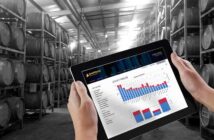
Food safety is always high on the agenda for those who produce, process, retail or serve food. It’s about to get even higher thanks to the Food Act 2014 and supporting regulations.
Food safety is always high on the agenda for those who produce, process, retail or serve food. It’s about to get even higher thanks to the Food Act 2014 and supporting regulations.
By Gary Hartley of GS1 New Zealand
The first effective provisions of this major new act give the chief executive of MPI the power to order a recall of any food where its safety or suitability is in doubt. The old law required the regulator to demonstrate first that a product was unsafe. (New Zealand food industries do, of course, have a good record of voluntary recalls).
The new act, which is being phased in over three years, categorizes food industries according to inherent safety risk and regulates them accordingly. In higher-risk industries – examples are the preparation and sale of meals, and the sale of raw meat – each business will be required to register a written and auditable food control plan (FCP) that sets out procedures and policies for managing its particular food safety risks.
Over the same period ahead, New Zealand food industries can expect major new requirements for high-standard product traceability. Traceability is about having rigorous processes to track and trace products, and to yield the precise information needed when a food safety issue arises – where a particular batch of product is located, who has been handling it, where its ingredients were sourced and so on. Traceability within supply chains is critical to effective product recall and ultimately, to food safety itself.
Food traceability has become an even hotter topic since the dairy industry’s whey protein concentrate (WPC) contamination scare in 2013. Traceability processes within our biggest industry, and into its biggest export market (China), were found wanting. Expect a big regulatory shakeup on traceability system requirements under the new Food Act – not just for dairy but various other food industries as well.
So, new and imminent rules – ultimately, all a reflection of rising consumer demand for information on products and greater assurance on their safety – are concentrating minds throughout our food industries.
Fresh produce is a great example. Leaders in this industry are taking the initiative to build a stronger food safety culture including a big leap forward on traceability. United Fresh, the representative body for all New Zealand produce growers, wholesalers and retailers, has begun work on a Food Safety and Traceability Framework for raising standards of actual practice in the domestic market. (United Fresh’s membership includes New Zealand’s major exporters of fresh produce – companies well used to meeting the traceability needs of their global trading partners.)
Under the new act, horticultural produce for consumption in New Zealand is deemed a low risk industry (to be regulated under a yet-to-be-finalised national programme). But United Fresh is the first to point out that fresh produce can be suddenly hit by food safety problems from unexpected directions – a point driven home by last year’s Yersinia contamination of bagged vegetables sold through a large supermarket chain. More than 100 people were sick after eating lettuces and carrots with the bacteria: There was no conclusive information on where or how the contamination occurred, although the retailer concerned acted rapidly to recall suspect produce.
United Fresh has set up a Food Safety and Traceability Committee to develop its framework, and liaise as necessary with New Zealand’s new Fresh Food Science & Research Centre (Massey University) and a Fresh Produce Safety Centre for Australia and NZ (based at the University of Sydney).
As committee chair Hans Maurer notes, food safety is getting plenty of attention but we need to ensure no wheels are being re-invented and that research feeds into practical solutions. Dr Maurer also makes the excellent point that the produce industry here – and everywhere – has at its fingertips GS1 standards for identification, bar coding and data sharing that are proven enablers to any traceability solution.
United Fresh has endorsed GS1 identifiers and Databar (the bar code type designed especially for produce) for wider application to fresh produce in this country. And the industry body is aiming, during 2015/16, for an orchard or paddock or greenhouse-to-supermarket shelf traceability pilot with one produce category to demonstrate exactly how traceability can work every day in this New Zealand industry
That’s got to be good news for everyone who enjoys a fresh summer salad or crisp apple in the autumn!




























































































